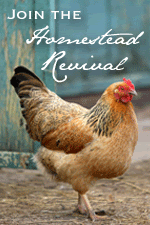I don't know. I haven't actually trained them to do that yet. They are too busy building their own little home! The bees are really doing great. Lots of brood means more bees to help gather and produce.
It is so fun to watch their progression. They seem to be happy here. The recent blessing of rain has brought out more forage. More forage means more opportunity for growth of the colony!
Here is a quick photo update...(you might be able to see them better if you click on the first photo and look at them that way)
 |
| The Golden Girls building comb! |
 |
| We have a good queen. Fresh comb with tiny little eggs in the bottom. They look like grains of rice. They are laid standing on end. By day three, they lay down and become a little curled larva. |
 |
| Here is a peek through a brood frame. Beautiful busy girls! |
 |
| This is a close-up of brood comb. You can see in the center there is a fat larva curled up like a C. By the time this baby is 8 days old, it will be capped. It will take about 13-14 more days to transform into an adult bee. The rest are empty and capped cells. |
 |
| There is a baby bee hatching out near the center! It has the capping mostly chewed off. Welcome baby! There are other cells that have been opened. See the white partially formed bees in the cells. Best I can tell, those are drones (males) which are apparently not needed and being removed from the brood comb. Sorry guys. Drones are notoriously hard to care for. They take resources and time away from worker brood, can't even sting and apparently have nothing to offer the colony besides genetics. Our queen is already mated so the drones are just taking up space and food. If any do hatch before Fall, they will be kicked out before the cold sets in. A bee colony is not a man's world. |
 |
| This is a beautiful picture of "bee bread" or a fermented pollen and nectar packed into cells. It is all different colors! The bees feed this protein meal to their babies. |
 |
| Here the bees are festooning. It is thought that they may be measuring to draw more comb. No one knows for sure. They hold little bee hands! |
 |
| Here (the bee with the red dot and long abdomen) is our great queen! She is a blond Italian. See, all of her babies are golden like her. They are following her around waiting to do anything to help produce more brood! |
 |
| There she goes! She backs her bottom into a polished cell and lays an egg. See how intent her nurse bees are. Amazing! The rest of them are busy feeding new babies and capping larva. |
By the way, I took these pictures while I was in the hive. I had on shorts, boots and no gloves. I manipulate the hive and the frames that way. It makes me more careful. I have not been stung yet. In the Fall, when they are a bit more aggressive due to protecting their stores, I will probably glove up.
Right now I can sit next to the hive with no protection on and watch the foragers fly in and out. They do not care that I am there. Matt let a bee crawl onto his finger the other day. She started cleaning herself and was perfectly happy to sit there while she did it.
There have been times while I was looking at a frame that I accidentally placed my finger on a bee. The worst I got was a buzz and wiggle. You can be sure I moved my hand fast but I did not get stung. Bees really do not want to sting!
The reason I say this is because many people fear bees. Yes, bees will sting. But when they sting, they die. So this is a last resort. They have to feel their colony and brood are threatened. Now, there are some aggressive colonies, some that may be Africanized, and some situations where bees are more irritated than others. So you have to know your colony and you have to know your circumstances.
But generally, if you come across a bee in your yard or one buzzing around your flowers, don't be afraid! They will not attack you for fun. If you cut down a tree with a hive in it, then run! Otherwise, just watch them and appreciate their complicated beauty.
They bring more good than harm to our world. They are necessary. Learn the difference between a harmless honey bee and an aggressive wasp. They will sting for fun. The meanies. But honey bees and many other native bees are just trying to do their jobs. So befriend a bee today!
Thank you from your obsessed beekeeping friend.












































